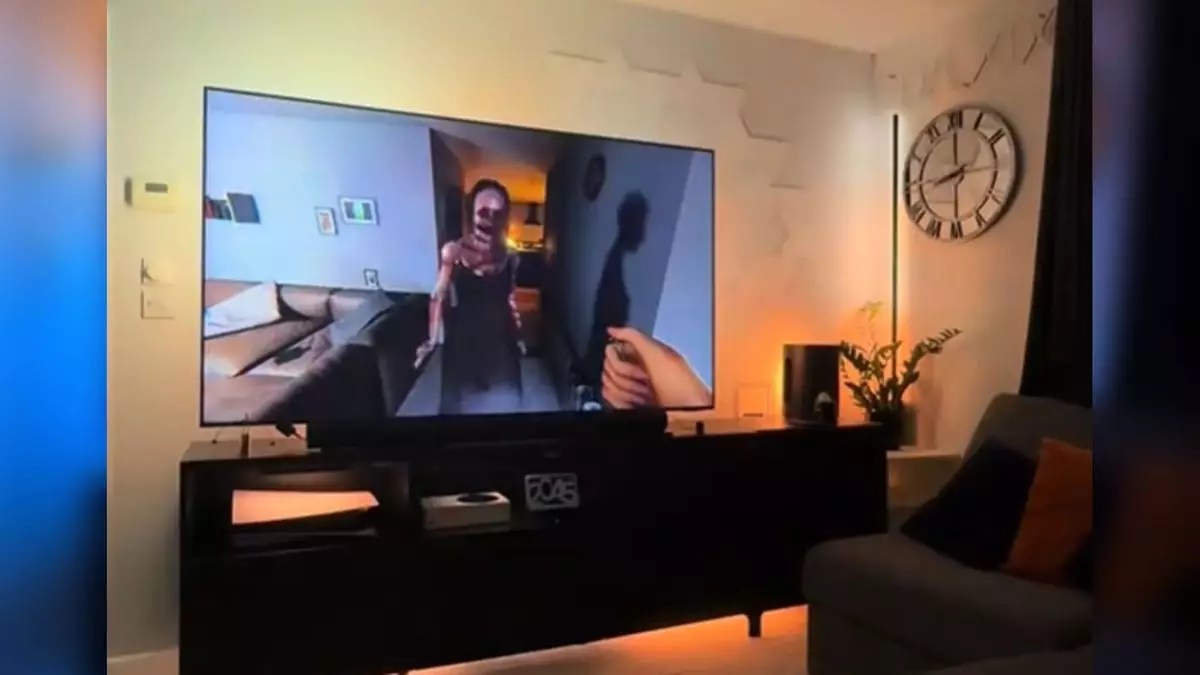The gaming industry has undergone a remarkable transformation over the past few decades, evolving from simplistic pixelated graphics to immersive experiences that tantalize all the senses. Among these advancements, the introduction of virtual reality (VR) and synchronized lighting has emerged as a potent combination capable of creating memorable gaming experiences. However, this innovation also brings with it a unique tension: the fine line between thrilling adventure and sheer terror.
In recent years, gamers have increasingly invested in elaborate setups that enhance their gameplay. This technology goes beyond traditional controllers and monitors; it encompasses an array of devices including VR headsets, haptic feedback systems, and smart lighting designed to create an environment that envelops players entirely. A notable example is the rise of RGB lighting systems, which synchronize with in-game actions to provide a visual experience that transcends the traditional screen.
This evolution poses an essential question: How far is too far? With the increasing complexity and the frantic interactivity of modern horror games, such as “Phasmophobia,” the interplay of sound, visuals, and now, synchronized lighting, can lead to experiences that are exhilarating yet fundamentally unsettling.
The Unsettling Genius of Syncing Horror Games with Lighting
One such example of pushing the boundaries of immersive gaming is highlighted by TikTok user Idaxix, who brands themselves as “The LED Light Guy.” Idaxix has ingeniously created a gaming atmosphere with an ensemble of LED lights that mirror the eerie tension of horror games, specifically “Phasmophobia.” By strategically employing lighting that flashes in response to in-game actions—like a ghost’s proximity—Idaxix transforms their living room into a mini haunted house, enhancing the already startling elements of the game.
This clever integration raises critical considerations about the psychological effects of immersive gaming setups. While some gamers thrive on fear and adrenaline, others may find such configurations overwhelming. For those who enjoy a good scare, this combination offers an adrenaline rush that is hard to replicate. However, for those wary of horror games, the multipronged sensory assault can be paralyzing. Imagine sitting in a dimly lit room with unsettling sounds echoing all around, intensified by lights that flash erratically during tense moments—this could easily provoke not only fear but also a desire to escape to a more tranquil environment.
The ability to engage the player’s senses like never before is a significant leap forward for the gaming industry, making it highly engaging. Nonetheless, creating a balance between engagement and anxiety remains essential. Although Idaxix’s setup represents innovation, it also necessitates a reflection on user comfort. Perhaps the future of gaming gear should include customizable settings, allowing players to adjust intensity levels, thereby facilitating a more personalized experience.
For those who find the realm of horror games daunting, options such as lighter-hearted games like “Mario Kart” serve as a perfect counterbalance. Videos showcasing Idaxix’s vibrant setups during such exhilarating, non-thriller competitions provide a refreshing change of pace and remind us that gaming is not always meant to be scary.
The Future of Gaming: Harmonic Integration
The blending of immersive technology with gameplay illustrates unprecedented possibilities in gaming. Features like haptic response pads, RGB lights, and even environmental elements like the proposed integration of a fan-assisted gaming chair could redefine the genre. One can envision future advancements where every shiver down the spine could be met with a refreshing breeze or a rumble that reverberates through the chair, escalating the experience.
Ultimately, gaming technology is both a thrilling frontier and a psychological playground. While the enhancements usher in new layers of interactivity and immersion, players must navigate the boundaries of enjoyment and fear. As creators push these boundaries, a collaborative dialogue amongst both gamers and technologists is essential, ensuring a holistic gaming experience that excites rather than overwhelms. As we venture further into this curious new landscape of gaming, we should remain vigilant about the delicate balance between excitement and terror, ensuring that the art of gaming flourishes without losing its heart.


Leave a Reply